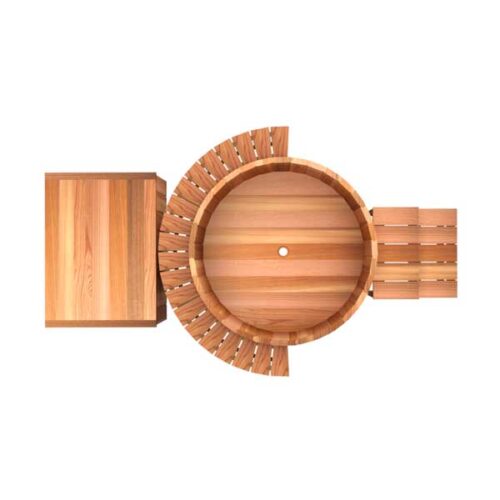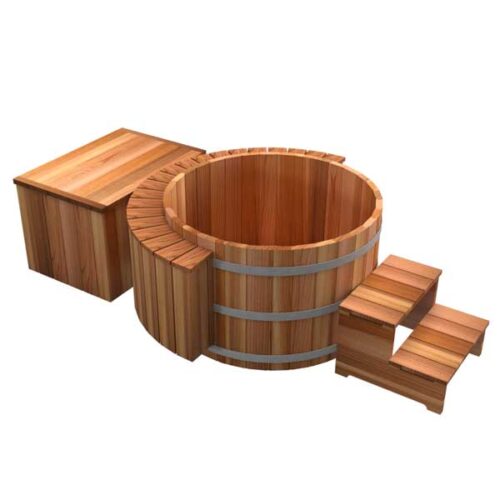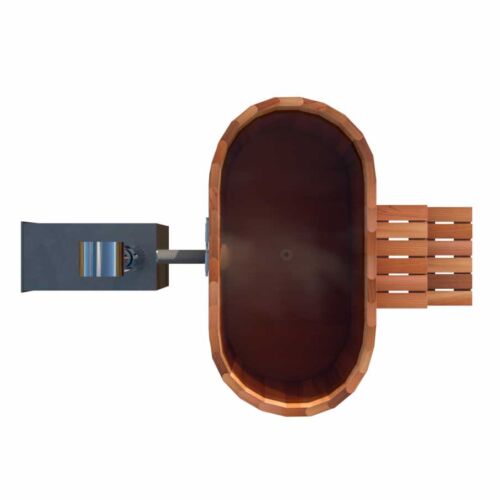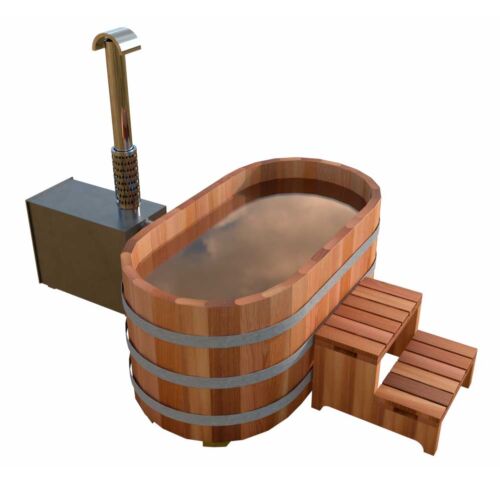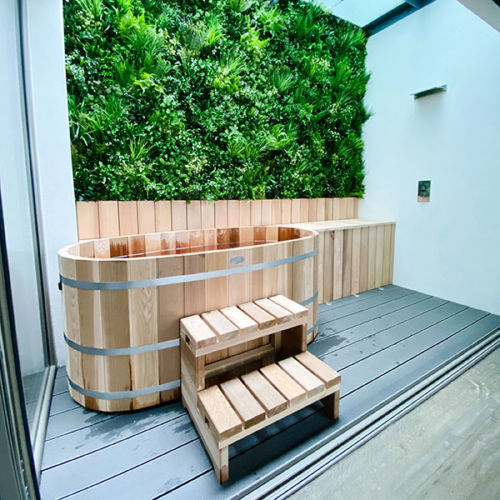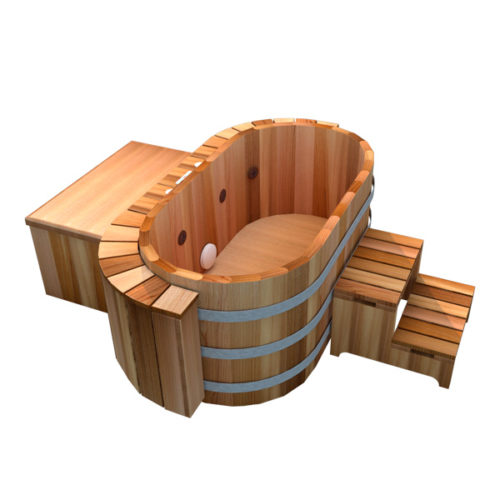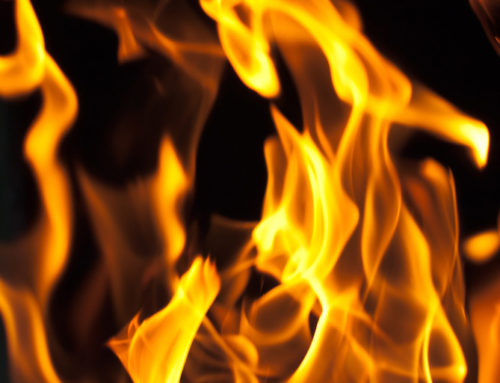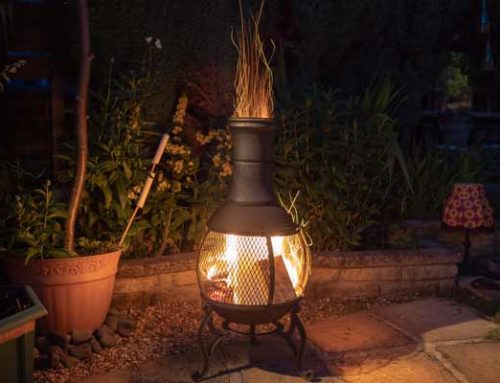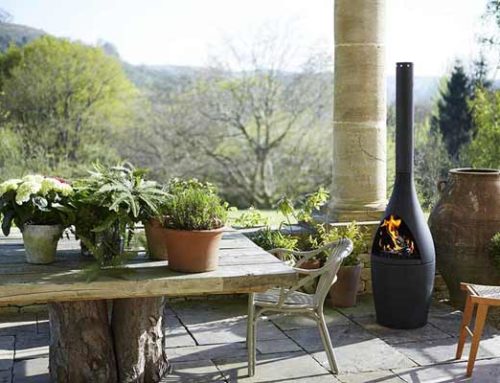Comparing Cast Iron and Clay Chimineas
Chimineas have been popular for at least four hundred years as a gathering place for families, to cook meals and to warm homes. For much of their history, Chimineas have been made from clay in the shape of a wide-bottomed potbelly stove, with a large mouth in the front and a tall, narrow vertical chimney. The tall chimney creates a natural draft and air is drawn into the chiminea through the mouth, allowing the fire to burn properly.
Chimineas are an excellent choice for heating up outdoor entertainment areas. Unlike a broader, more open fire pit, the heat in a chiminea is contained and more comfortable to control. After being lit, chimineas can reach full burn in 15 minutes, quickly giving off a great deal of heat.
The traditional clay chimineas have not lost their appeal, but modern versions made of cast-iron, copper and steel have become increasingly more popular. Contemporary models come in a wide array of sizes and designs and have become much more versatile and durable.
The greater choice has left people in a quandary though. Cast-iron is more durable, more versatile, has a much higher heat output. On the other hand, clay is beautiful and traditional. So which is actually better, cast-iron or clay chimineas? Let us compare them, and then you decide.
Cast-iron Chimineas
Modern chimineas are used mostly in the garden or on a deck or patio for outdoor entertainment unless a special chimney or flue system has been built in to allow smoke to escape through the roof of the house. The design of a chiminea makes it particularly suitable for outdoor use, even in the rain without the water extinguishing its flame.
While cast-iron is man-made and looks less natural than clay, the lovely curves and contemporary designs ranging from the traditional shape to highly trendy models more than compensate for that.
Using them outside, even in the rain, of course, makes the clay chiminea vulnerable and it has to be treated regularly and kept covered to protect it from the elements when not in use. Cast-iron chimineas are much more durable, can withstand the weather much better and provided it is painted with heat-resistant paint to prevent rust, it will last for generations. It is not prone to cracking from sudden temperature changes or physical damage like clay chimineas.
Cast-iron chimineas can withstand a lot more heat than clay, which allows you to create a lot more heat by burning either wood or coal or making larger fires. The option of using coals or briquettes allow for much greater versatility as it is not usually possible to cook directly above open flames. Most cast-iron models have been specifically designed to allow grilling and barbeques. Wood can still be burned in a cast-iron chiminea for the sheer enjoyment of gathering around a fire, or for smoking meats, fish, or chicken.
Clay and cast-iron are both heavy materials, but the cast-iron models tend to be heavier and more difficult to move about. On the counter-side though, they are less likely to be damaged when moved. Cast-iron models usually get hotter on the outside and care must be taken with children around. The benefit though is that more heat is dispersed to keep you warm.
Unlike clay chimineas, the cast-iron models do not need a curing process and are ready for use immediately.
Clay Chimineas
Clay chimineas come in different sizes and decorations. Some have ornamental handles, some are elaborately decorated, some are painted and some are plain. Clay is less expensive but cast-iron will probably last longer.
Clay chimineas are moulded by hand from heat-resistant earthenware and are then fired at high temperatures and glazed. Fired and glazed clay is fairly resistant to water and heat, but remain vulnerable to rain, sun, frost, sudden temperature changes and physical damage, although top-quality clay chimineas come with a limited warranty of up to 5 years. It is essential to cover clay chimineas with an appropriate cover when not in use. Any water left inside the chiminea could damage the clay. Water puddles which freeze inside the clay chiminea may cause it to crack. Precautions need to be taken that a fire is not started or someone gets burned if the clay chiminea should crack or shatter.
Proper maintenance and using the correct wood will help to let clay chimineas last longer. Some of the modern chimineas are made from heavily grogged clay to make them more resistant to sudden temperature changes, especially if they are heated up in winter. Grogging means to grind already fired clay and then use that to manufacture the clay chiminea.
Both cast-iron and clay chimineas must be placed on stable, level surfaces to prevent them from toppling over and must be used correctly and safely according to the manufacturer’s instructions. Both must be placed on a fire pad, in a fire pit, or on concrete, stone or tiled bases to prevent fires and heat damage.
Clay chimineas don’t usually have a grill which is fitted into the chiminea, but you can buy a range of special cooking equipment separately.
It is essential to cure new clay chimineas before they can be used for the first time. To do this, put about two to three inches of river sand in the bottom and then burn some small pieces of wood kindling. Once the kindling has completely burnt out, build a small fire and gradually add more significant pieces of wood until you have a hot fire. Let the fire burn out and let the clay chiminea cool down. Remove the sand, and your chiminea should then be ready for use. It is not advisable to use coal or briquettes in clay chimineas. It is also essential to warm clay chimineas up gradually at every use, particularly in cold weather, to prevent cracking.
The expert team at Firehouse will give you good advice on which size and design will best suit your needs and tastes and can install it for you professionally.


